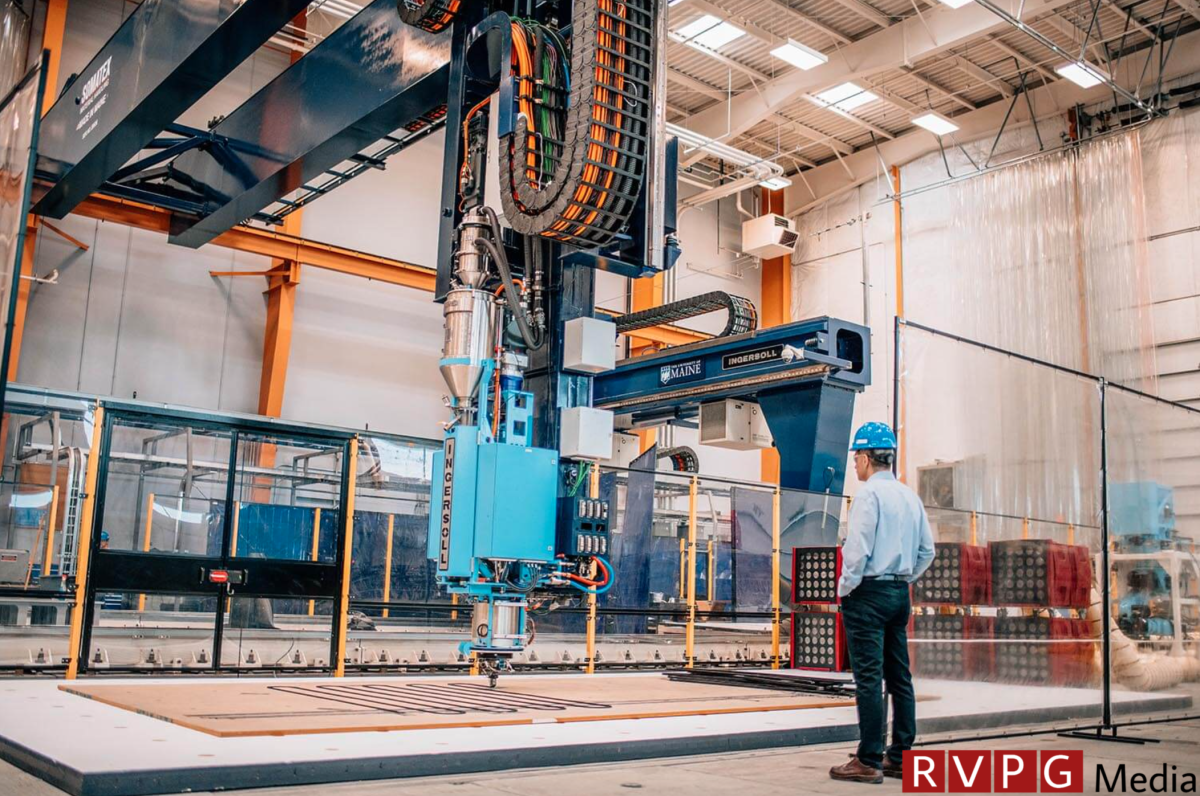The University of Maine just unveiled the world’s largest polymer 3D printer. The new printer, called Factory of the Future 1.0 (FoF 1.0), can print objects up to 96 feet long, 32 feet wide, and 18 feet high. Relatively speaking, it’s also pretty fast, as it can print up to 500 pounds per hour. That’s about three people per hour.
It can dynamically switch between printing techniques to suit different aspects of complex jobs. The printer can switch between large-scale additive manufacturing, subtractive manufacturing, continuous line building and robotic arm operation. These technologies make the printer ideal for a range of industries including housing, infrastructure and military vehicle development.
Most of the material made from it is recyclable, so “you can basically deconstruct it, grind it up if you want” and “do it again,” according to Dr. Habib Dagher, the director of the Advanced Structures and Composites Center at the University of Maine. To this end, the printer prioritizes bio-based materials such as wood scraps.
This technology seems like a great way to build a lot of affordable housing quickly, and that’s exactly what some proponents have in mind. “Maine will need an estimated 80,000 additional homes by 2030, many of which will be specifically designed for households earning at or below the regional median income,” said Mark Wiesendanger, director of development for MaineHousing. “This effort creates another opportunity to create high-quality, affordable housing while further reducing costs and utilizing abundant lumber from Maine lumber mills.” AP suggests that the printer “could one day create entire neighborhoods.” According to the specifications, it should be possible to build a modest one-story house in about 80 hours.
However, this is America, so it’s not like people built this thing just to help the homeless. UMaine researchers received funding from the Army Corps of Engineers, the Department of Defense and the Department of Energy. These government institutions want a return on their investment, so the printer will likely also be used to produce lightweight, rapidly deployable vessels such as submarines and other maritime vehicles. Senator Susan Collins called the printer “invaluable to our national security.”
The FoF 1.0 features a sibling printer on the UMaine campus that was the previous record holder for the world’s largest 3D printer. It has already been used to make a 600 square meter single-family home using wood fiber and bioresin materials. However, the new printer is four times larger. Fortunately, the two models are housed in the same location and can work on different aspects of the same projects at the same time.
The University of Maine will soon break ground on a new research laboratory called the Green Engineering and Materials (GEM) Factory of the Future. This will be the new home of both printers, with the primary goal of “enabling and expanding more sustainable manufacturing practices.” It will likely accommodate even larger printers in the future. “We learn from it to design the next thing,” said Dr. Dagher told ABC News.
